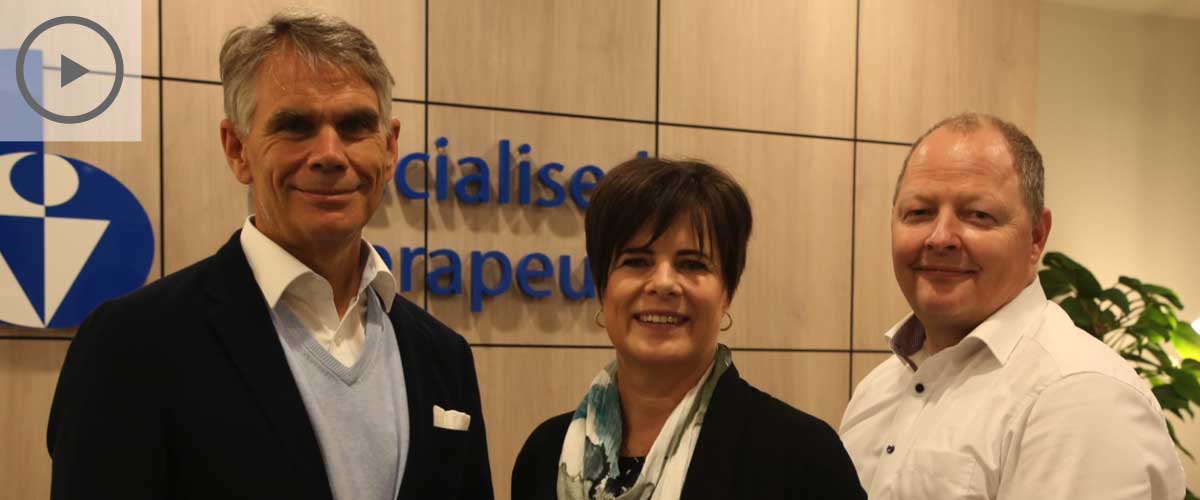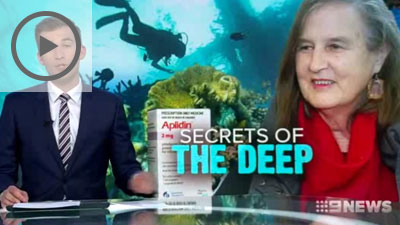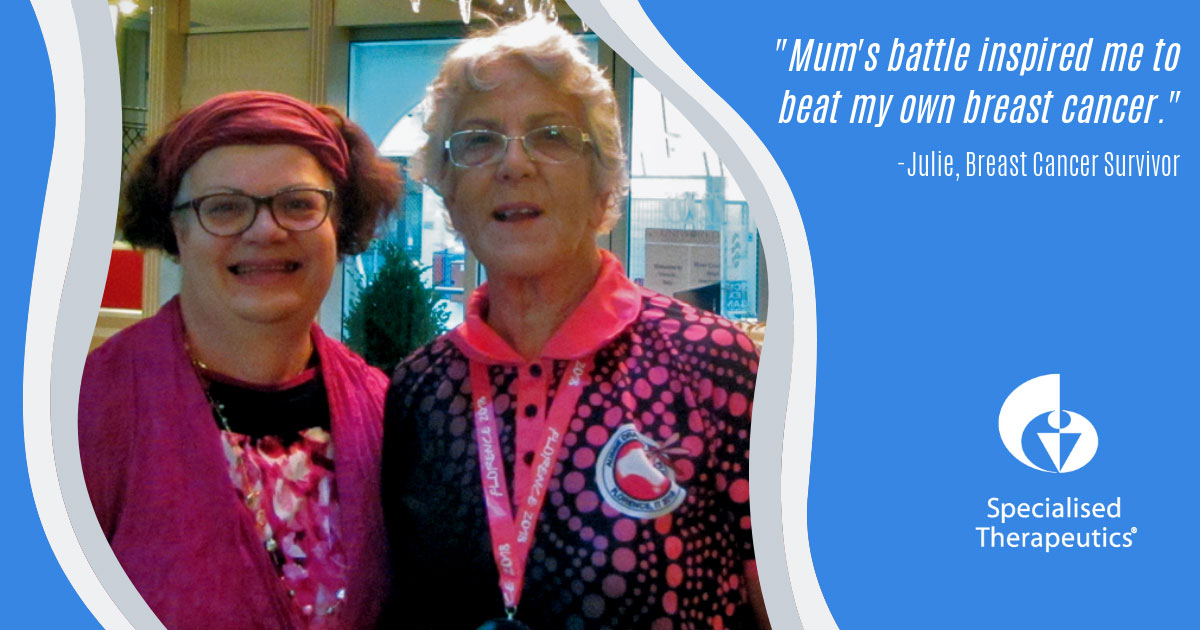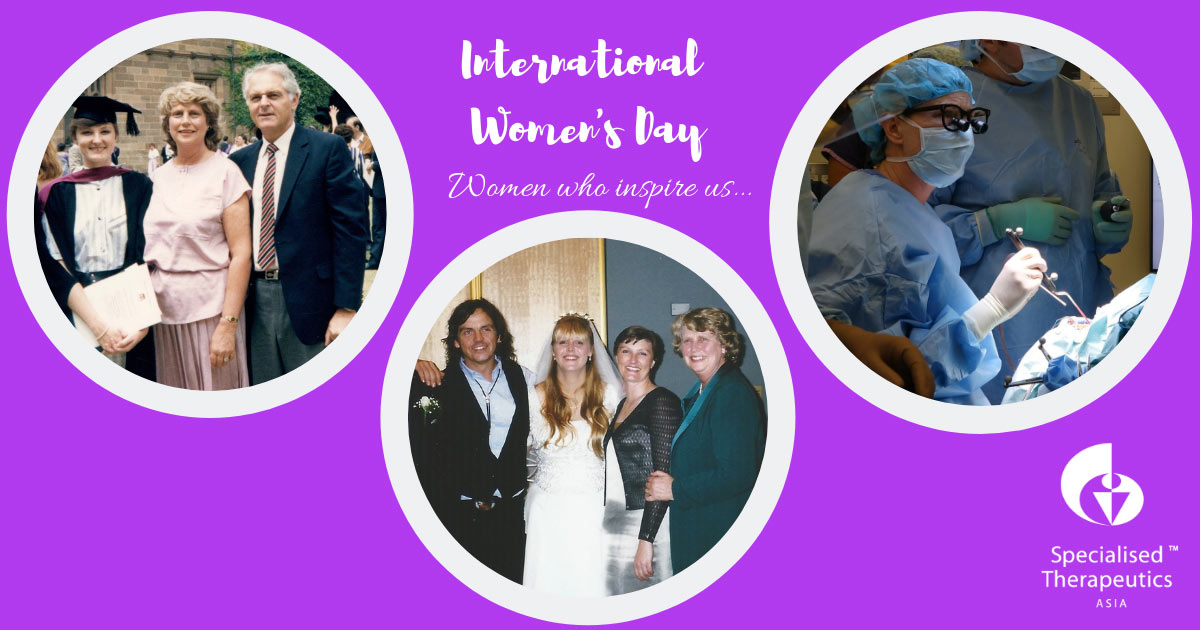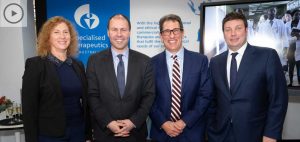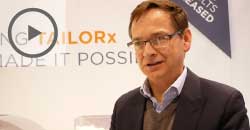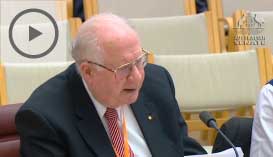World First: AU Patients First to Access Drug Developed from Sea Squirt
Mother’s Day
On Mother’s Day 2019 we recognise the Mothers and Daughters who face a breast cancer diagnosis together. Janet and Julie Kesby have both been diagnosed twice and have supported each other all the way. Both are well at the moment and say their bond was always good; now it’s unbreakable. They shared their stories with Specialised Therapeutics in May 2019.
Janet’s Story:
“I am 78 years old. I have four children and I am retired. I was first diagnosed with breast cancer in 1991, when I had a right breast mastectomy. I did not need chemo because they caught it early, thank goodness. But then, in 1998 I was diagnosed again. This time it was in my left breast. Doctors told me the multiple cancer tumours were not even related to my first experience and that these episodes were entirely different. So, I then had a left breast mastectomy. I was fit and healthy before both diagnoses, so I was in shock. Again, I did not have chemotherapy. I trusted the doctors who told me they had caught it early for a second time, but I took Tamoxifen as a preventative medication for a number of years. Both times I faced breast cancer, my daughter Julie was a great support. She even took long service leave and holidays to help me and my husband on our farm. I will never forget it. On the second diagnosis she again took leave and travelled from Canberra to Millbank (near Kempsey) to care for me.
I was devastated when Julie was diagnosed in 2009 because I knew exactly what she was feeling. But I also knew you could get through it – because I had. This time it was my turn to help. I travelled to Canberra to be with Julie, and her sister Alison.
When Julie was diagnosed for a second time (in 2014), her sister was her main support because I was at home supporting my husband on the farm.
Our bond is strong and we are the best of friends. Coping with cancer has probably made us closer. We have a common interest in dragon boat racing and we really understand the process of coping with cancer. We think we are both okay for now.
There have been silver linings from this whole experience. I was a migraine sufferer and I have not had one since 1991. Maybe it was the hormones?
I received wonderful support from family and friends, and also from sporting friends each time I was diagnosed.
I faced another cancer battle in 2007 when I was diagnosed with rectal cancer. This involved major surgery and chemotherapy, but I have come through everything again.
Julie has always been a great support. We are similar in that we both have faith and we believe in prayer. We encourage each other to be positive and each time we have been diagnosed, we have worked really hard to get back on track and return to normal activities.
How would I describe the mother daughter bond? Unbreakable. We have been there in good times and bad. As a mother, I am grateful to her for all she has done for me. And I hope she has always been able to rely on me.”
Julie’s Story:
“I am 55 years old and am retired at present, but I am looking to work again. I was a Research Officer for 29 years at the University of New South Wales in Canberra, before being made redundant in 2016.
My first diagnosis was in 2009 when doctors found abnormal cells inside one of the milk ducts in my right breast. I then undertook two wide incisions before a mastectomy in January 2010. Then I was diagnosed again in 2014. It was April Fool’s Day when the GP confirmed the results that I had two tumours in my left breast. I could not believe it was back, and undertook the mastectomy of my left breast and removal of lymph nodes. No chemo was required. I have just finished the five years of Tamoxifen post-surgery.
I was in shock at the first diagnosis, but looking back, I had been fatigued. I put this down to work and life but there was obviously something else going on. I could not believe it when I was diagnosed again when I was very fit and back to life in full swing.
I got through both times by keeping myself really fit, dragon boat racing and playing tennis.
I did have great support from family and friends each time. And I had confidence in the medical teams and in my wider support network.
My Mum was a great example of determination. Her drive to recover from her breast cancer inspired me. She gave me great strength to get through everything and understand the steps to recovery.
How would I sum her up? My Mum is inspirational! Having said that, my Dad, sisters and brother and families have also given me great support and great love along the way. Dad has been a great carer to Mum and a very special support to us both. Mum, Dad, Alison and I have celebrated together milestones through some special family overseas trips to Canada, USA and UK. More recently Mum and my sister Alison travelled to Italy and Switzerland.
Mum and I do have a special understanding of each other because of what we have gone through. Our common interest in dragon boat racing (through Flamin’ Dragons, Aussie Dragonflies and Dragons Abreast Canberra teams) and tennis has also strengthened this bond.
We are close, tight and true friends, as well as Mother and Daughter. Mum understands me when I’m celebrating and consoles me when I am down.
We are both well at the moment. I am determined to stay fit and healthy and to keep travelling. I also want to continue my volunteer work and mentoring of others.
Mother’s Day has always been a celebration of our Mum and past Grandmas. This year will be no different.”
*May 2019.
International Women’s Day
March 8 is International Women’s Day. Today, we recognise the clinicians, patients and our colleagues whose stories always inspire us to be better at work, and in life. We know everyone has a story. These three women have generously shared some of the diverse experiences that have shaped their lives and careers.
Kate’s Story
Royal Melbourne Hospital Head of Neurosurgery Associate Professor Kate Drummond toyed with the idea of teaching and science before finding her way into medicine. Born and bred in Sydney, she credits her parents for inspiring her academic achievement, with their never-ending encouragement instilling a firm belief she could do anything. And while brain matter is interesting enough, it is the people she treats every day who matter most. In this piece, she explains her motivation and outlines her next mission to improve global health.
You were the first person in your family to attend university. What inspired this brilliant career?
I don’t think it was anything other than parents who were just totally encouraging. I was the long-awaited child of adoptive parents. They had been waiting for me for a long time and my Mum and Dad poured all their love into me. I was read to, constantly encouraged and told I could do anything. It did not strike me at the time, but this sort of culture of achievement was built into me and encouraged. Of course I would go to university! My family did not have medical backgrounds themselves. My mother teaches piano and my father started out as a draftsman but then worked in building management for fire protection. There are no medical people in my family at all.
It was not right until the end of school, until a teacher said to me, ‘If you study hard you might get into medicine’. I thought it sounded interesting, but I was planning on teaching or maybe science. It was not until the end of school that I even considered medicine. I estimated I would need 430 out of 500 in the HSC to get into medicine at Sydney University. I had not hit 400 in my trials, but I got 431 in the finals. It was a bit of a late decision!
How did you find it initially?
I really struggled at the beginning. We did not start out training in hospitals. The first two and a bit years were sitting in a lecture theatre, learning about comparative biology and other dry basic science topics. It was not until I started seeing patients that I thought ‘okay, this is what I want to do’. I started out wanting to be an obstetrician and then I delivered a baby (which really changed my mind!). Seriously though, there are a lot of things about it that made me realise it was not going to be for me. There are a lot of moral dilemmas in obstetrics. I did quite like the gynaecological surgery in my rotation. I intended on doing general surgery, but when I was an intern I had to do a term in neurosurgery to get the general surgery rotation I wanted. The rest is history.
What is it about neurosurgery that fascinates you?
A lot of people come into neurosurgery saying, ‘I am really fascinated by neuroscience and the way the brain works’. It is kind of interesting, but I am actually much more fascinated by the people I look after. These are vulnerable people and I am really fascinated by how they respond and cope and be wonderful humans even when everything is going wrong.
You have been a practising neurosurgeon sine 1997. Do any patients stand out?
There are so many. But I will never forget the young woman with brain cancer who, against all odds, felt that she had to have a child despite her limited prognosis. She wanted to leave a legacy and managed to deliver twins between radiation and chemotherapy. She started off with a low grade tumour but ended up a glioblastoma. She was only in her 30s, but fell pregnant while having treatment for cancer.
Was falling pregnant against your advice? Absolutely not. My job is to make things happen if I can. This is what she desperately wanted and she achieved her goal. She had a girl and a boy and was exhausted, but joyful.
Her twins were just over a year old when she passed away. And then there was the beautiful young couple who postponed their wedding for the brain surgery. They took the wedding photos so you could not notice that one side of his face was drooping. He went through radiation and everything else. Just as they were about to go on their honeymoon, the tumour came back. He started on chemotherapy the night before they got on the plane. They went all over Europe on chemotherapy so they could still have a honeymoon. These people are extraordinary. I am always inspired by the lives that they make with what they have got. This man lived for maybe 18 months after the wedding.
Stage 4 brain cancers are incurable. What do you hope to achieve for your patients?
I want to give them the longest good quality life that we can get. Ultimately, what we hope to achieve is some cure or longer term control. But at the moment, the reality of the job is I help them achieve their goals as best we can. I think long-term control is within our grasp. We need to translate what we are seeing in immunotherapy to other cancers. It has been disappointing so far, but sometimes it is just one piece of knowledge that drops in, like HER2 inhibitors for breast cancer and Glivec for leukaemia, or BRAF inhibitors and immunotherapy for melanoma.
What’s a day in your life like?
I generally start at 6am, so I am up at 5am. I try and get a bit of paperwork done, then hit the wards at 7 am for a ward round. My days are varied: it could be all day in clinic, all day operating, it could be meetings, it could be research. Outside work, I go to movies, I go to plays, I go to the symphony. I read books, I exercise and I hang out with my family. I mostly like superhero movies. I don’t want to watch movies where people are having bad things happen to them. I work with people who have bad things happen every day. I don’t need to see it to have a good cry. I want happy movies.
You are now a department head. Where to from here?
Being Head of Unit was kind of my end-game. So now, I think I would like to probably have more influence in brain-tumour research. And I have a real commitment to global health education through my role as Chair of Pangea (formerly Specialists Without Borders). Growing that part of my career portfolio is something that is a real focus at the moment as well.
Tell us about Pangea, how it works and your long-term goals for this organisation.
Pangea began 13 years ago, originally as a lecture series in Africa. Basically it involves healthcare professionals from Australia and New Zealand travelling to developing countries to impart some of our knowledge to healthcare professionals working on the ground there.
These people (in developing countries) may be very good doctors, but they are living in a place where there is not very good infrastructure. What Pangea really wants to do is through education, leave behind the expertise to change the health system. We are leaving a sustainable legacy. The lessons we leave behind will benefit health outcomes for their communities for many years. These Australian and New Zealand health professionals pay their own way to do these trips and take annual leave to be part of it all. But it is incredibly rewarding and it is great fun.
My ambition for Pangea is that it becomes a massive organisation. I want it to be the go-to organisation for global medical education needs – providing flexible, practical, scalable, targeted health education in low-resource settings. We have now done several trips to Africa, teaching our counterparts in Malawi, Zimbabwe and Rwanda.
In 2019, we are hoping to go to Myanmar and start educating health professionals in that area to improve outcomes there. The possibilities are endless. Africa we love, but I think we need to have some programs a bit closer to home.
What would you say to a young person now contemplating a medical career?
I would say ‘Become a doctor’. It gives you an unlimited range of career possibilities. You might not end up in the clinical care of patients – you could end up in research, administration or international health. It is a ticket to so many fulfilling careers, in specialty practice or general practice. You don’t have to worry too much about where the end point will be, it is just a great thing to do. You will find your niche.
*November 2018.
Vanessa’s Story
At STA, one of our core company values is PASSION. Senior brand manager Vanessa Vandenberg is responsible for marketing our novel brain tumour visualisation drug GLIOLAN and our first-in-class multiple myeloma drug, APLIDIN. Here, she tells of the personal experiences that have shaped her life and why this value resonates.
“I’m a strong believer that our life-experiences prepare us for a greater plan. When we face challenges, we do not always see the bigger picture, but it always become apparent – almost like ‘joining the dots’.
I was only 12 years old when my mum was diagnosed with a brain tumour. I grew up in South Africa and we had to travel about 380 kilometres to a hospital for her surgery.
Mum had her first surgery to remove the brain tumour and came out of the operation fairly well. She was only 38. Unfortunately, the tumour grew back within three months and when it did, it spread into an eloquent area of her brain and she went to hospital for further surgery.
The second surgery was almost a full day, about 19 hours. When we were allowed to see her, she could only say a few words and couldn’t remember or pronounce our names.
My Mum’s first language was English and ours was Afrikaans. When she started speaking again, she could only speak English, her mother tongue. She had to undergo extensive whole brain radiation, which was still very much the treatment of choice in the early 1980’s.
While she did recover, her speech was permanently affected and she couldn’t express herself, especially if we made her angry.
Mum survived another eight years, then died very suddenly of a brain haemorrhage. The post-mortem showed that she had an aggressive leukaemia, which was most likely the underlying cause of her haemorrhage.
It was 12 years after Mum’s death that I lost my Dad to mesothelioma, a very aggressive lung cancer.
It is ironic that my professional life in the pharmaceutical industry has led me to work with oncology and haematology products. My role now is marketing two products, (brain tumour visualisation technology) GLIOLAN and (multiple myeloma therapy) APLIDIN.
I am so passionate about this role and all my life experiences have created this passion. I have never been so passionate about products in my life. I have been privileged to sell products in the oncology/haematology space, however there is something with both APLIDIN and GLIOLAN that really resonates with me.
When I speak to a surgeon about using GLIOLAN to improve the extent of resection, I want to say, ‘I know what the risks (of brain surgery) because I have experienced it first hand’.
You never forget the shock of seeing your mother unable to speak, tears running down her cheek, as she tries to communicate. But she always said she just wanted to see us grow up and would have done anything to stay with us longer, even if there were deficits.
It makes me sad to think she never saw my graduation and was not there when I got married and had my son.
When I work now, I think of the extra time new therapies can give patients, even if it is only a small amount of time. Walking down the aisle with a child, going on a last family holiday, getting married. I am passionate about extending life.
I can tell you, those few months can mean so much. Mum was there to raise us. I would do anything to have that time again. I would have done anything to have my mother at my wedding ten years later. My experiences have created my passion to help other people and their families.”
*Vanessa shared her story in December 2017.
Living with Multiple Myeloma: A Patient’s Story
Dot and Terry Arnold were teenage sweethearts who drifted apart but found themselves happily reunited in later life. Both had been married, but Terry was divorced and Dot had been widowed. On Terry’s retirement, they dreamed of travelling Australia in their “old caravan with new curtains”, even managing a few short trips to South Australia, New South Wales and Queensland.
Their contented new life however, was marred when doctors finally discovered why Terry was lethargic and breaking bones so easily – even by just getting out of bed. Terry became one of the estimated 1800 Australians diagnosed every year with the blood cancer, multiple myeloma1. After a stem cell transplant, chemotherapy and a clinical trial, Terry is doing well. He knows he won’t be cured “but I am hoping to keep this disease asleep and get another five or ten years.”
Terry’s Story
I worked in the plastics industry for 25 years and I was enjoying retirement. Dot and I did a few trips in our van but then I went to see a local doctor because I had a really sore back and I was starting to break ribs just getting out of bed. I had always been fairly fit, but one morning I got out of bed and my ribs started to crack.
It was so painful. So we went to the doctor and she ran all the tests.
When they told me it was myeloma I was shocked, we knew nothing about myeloma.
In my case, the body attacked the bone marrow. The myeloma could have been in my system for a long time. I might have had it 5 to 10 years. What triggered it, I don’t know. It was so quick.
We were that shocked and we did have a little cry. But then we went to see the haematologist and he was very honest. He said we can’t cure it, but we can put it to sleep for a while.
It certainly put a dent in my travelling plans!
They put me straight on to chemo and then prepared me for a stem cell transplant. I had the cell collection but about two weeks before it was due to happen my (paraprotein) levels were up and we had to put the transplant off. Then they asked me if I wanted to go on to a new trial, which meant another lot of chemo.
Our doctor Michael thought it was a good idea, and we trusted his leadership.
We got the levels back to where they should be and then I had the cell transplant. This was a tough time; I was in hospital for about a month.
I have been in remission for about 4 months now. It’s all going very well. I go back to the doctor at the end of every month for a blood test and you do worry about what it’s going to show up.
At the moment I am on a lot of steroid and hormone pills. Once I get off them, we want to head up north.
I don’t think I would have got through any of this without Dot. She has been marvellous. I want to keep this disease at bay and I am hoping we get another five to ten years.
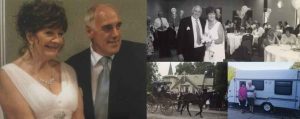
Dot’s Perspective
Terry and I were childhood sweethearts. We weren’t together very long , but I dumped him. I always felt sorry about it and I always wanted to apologise, because he was really a lovely guy.
After my husband died, I asked a mutual friend how he was going. The friend put us back in touch and we caught up for dinner. I was shaking so much my cutlery was rattling.
I was worrying about how old I looked!
We got married four years ago and were looking forward to retirement.
I knew nothing about myeloma when he was diagnosed and we were shocked.
It has been tough. After the cell transplant, I did not think he would be coming out of hospital, he was so sick. Now, I just feel so relieved. He has been through a tough time and to see him suffer like this has been terrible. So, we are dusting the caravan off and I have made her some new curtains to freshen her up. We are planning on going up north.
You need to make the most of every day. None of us knows what is around the corner.
Dot and Terry would like to thank Dr Michael Lowe, Professor Andrew Spencer “and the amazing team at The Alfred for their dedication and for giving us a second chance at life”.
* Dot and Terry shared their story in February 2018.
Federal Treasurer Josh Frydenberg Opens New ST Headquarters
August 2018: Australia’s new Federal Treasurer Josh Frydenberg officially unveiled ST’s new Melbourne headquarters, an event coinciding with the company’s 10 year anniversary.
The deputy Liberal Party leader joined staff and other local dignitaries at the celebration, praising ST’s commitment to innovation and recognising it’s contribution to Australian healthcare.
Click on the video link above to see the celebration unfold.
ST was founded ten years ago by pharmaceutical ex-pats Carlo Montagner and Bozena Zembrzuski with a single chemotherapy product and has emerged as the largest privately-owned Australian specialty pharma company in the region, employing close to 50 employees, generating revenues of ~$30 million and with an expansive specialty drug portfolio spanning oncology, haematology, ophthalmology, supportive care and neurology.
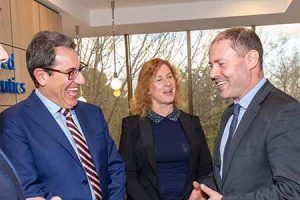
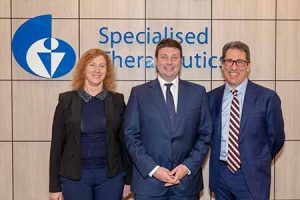
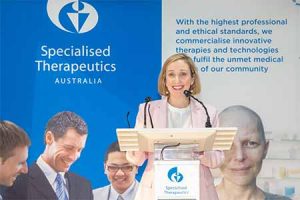
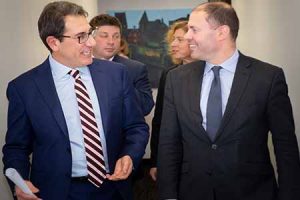
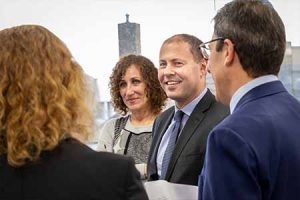
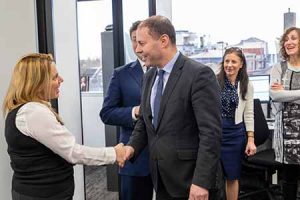
Officially opening new Australian headquarters in Melbourne, Chief Executive Officer Carlo Montagner attributed the company’s success to a strategy of in-licensing mid-to late-stage products for full commercialisation, but said the next 10-year plan included in-licensing earlier-stage drugs, steering them through full clinical development and globally commercialising these products. “This may require us to list a subsidiary company either on the ASX or on Singapore’s SGX to co-fund compound development,” he said.
“Our vision for the first 10 years was to build a profitable pharmaceutical company partnering with leading global biotech and pharmaceutical companies. While we continue to invest aggressively to further expand our global partnerships and product pipeline into new therapeutic areas, it is now time to build on these solid foundations and execute the next stage of our company’s development.”
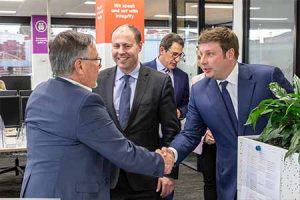
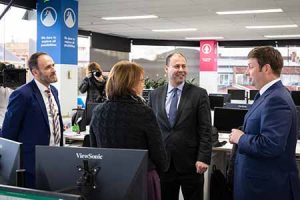
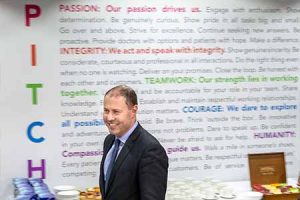
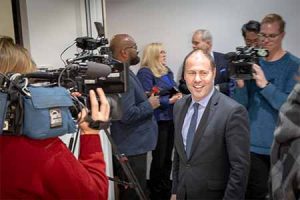
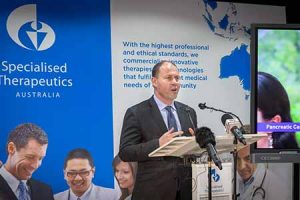
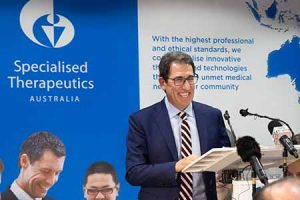
Federal Treasurer, Deputy Liberal Party leader and Member for Kooyong Josh Frydenberg MP officially unveiled the company’s new headquarters, noting ST’s role in cementing Victoria as a major pharmaceutical and biotech hub.
“This company is an Australian start-up success story,” he said. “We know that as many as 90 per cent of start-ups fail to flourish after five years. ST is a stand-out in the pharmaceutical sector and continues to grow, providing employment and generating strong revenues.”
Member for Kew and Shadow Education Minister Tim Smith MP commented: “I am delighted that Specialised Therapeutics has chosen to set up their new headquarters in the eastern suburbs of Melbourne, specifically in my electorate of Kew. Small to medium enterprises are vitally important for our local economy and community.”
Mr Montagner said: “Bozena and I are extremely proud of what we have achieved in the past decade, which has laid the foundations for our ultimate vision: to build a global pharmaceutical company delivering specialist medicines to patients where there is an unmet clinical need.”
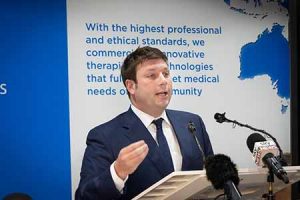
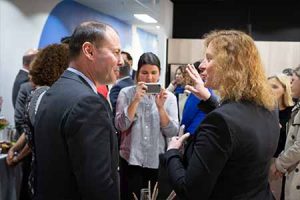
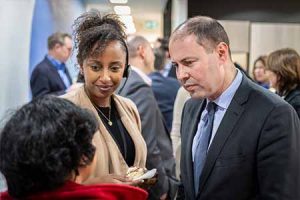
TAILORx Explained
New findings from the landmark TAILORx study have revealed that the Oncotype DX Breast Cancer Assay is able to accurately identify the 70% of early breast cancer patients who can safely avoid chemotherapy, as well as the 30% of women for whom chemotherapy is optimal.
This investigation was the largest adjuvant breast cancer treatment trial ever conducted, with more than 10,000 women evaluated using the Oncotype DX breast cancer assay.
This test analyses 21 specific genes within a tumour to provide a Recurrence Score between 1 and 100.
In the TAILORx study, those with a Recurrence Score of 11-25 were randomised to either receive chemotherapy and hormonal therapy or hormone therapy alone and were followed up for more than nine years. Key findings presented today have demonstrated the predictive and prognostic ability of the technology – identifying those women who can avoid chemotherapy and for whom hormone therapy alone is appropriate, as well as those women for whom chemotherapy is optimal.
Australian oncologist Richard de Boer explains the importance of this outcome globally and for Australian women.
Watch the interview by clicking the link below.
Senate Inquiry Into Rare Cancer Survival
Senate Inquiry Into Rare Cancer Survival
June, 2017: A Senate Committee was appointed earlier this year, to examine why some cancers still have low survival rates. The Senate Select Committee into Funding for Cancers with Low Survival was established following concerns that there had been little to no improvement in the survival rates for some rarer cancers, including brain, liver, stomach and pancreatic cancers.
Brain Tumor Alliance Australia co-founder Denis Strangman AM has appeared before the Inquiry, calling for broad availability of brain tumour visualisation technology.
In his opening address, he noted: “If this committee really wanted to make an impact on brain tumour treatments right now, I would suggest it recommend ways that surgeons can achieve greater resection of the tumour, and the most cost effective means is to use the fluorescence-guided agent, Gliolan. I never thought I would see the Kiwis ahead of Australia in the medical stakes, but they have put us to shame with their approval from the 1st of June with the subsidisation of Gliolan for glioblastoma patients. And, an American drugs advisory committee also recommended its reimbursement for glioblastoma less than a month ago, with a unanimous vote of 11-0. It (Gliolan) has been used in Europe for many years. Australian adult glioblastoma patients are being left behind in the possible extension of their survival. But Gliolan would be a cost-effective opportunity to redress the balance. Thank you Chair and Senators.”
To view part of Mr Strangman’s opening address, please click on the following video link.
ST’s Business Development Team at #BIO2018
Specialised Therapeutics delegates will attend the BIO International Convention, which returns to Boston Massachusetts this June.
Hosted by the Biotechnology Innovation Organization (BIO), the event is designed to foster global biotechnology innovation by uniting the pharma industry with biotechnology companies, academic institutions, state biotechnology centres and related organisations.
As in previous years, Specialised Therapeutics’ Business Development team will take advantage of “BIO One-on-One Partnering” networking opportunities. Our team will meet with potential new partners who have promising treatments in later stages of clinical development.
For further information about partnering with Specialised Therapeutics, please see our CEO’s latest blog or see our Partnering page.
Access Program Initiated
SARAH-JANE TASKER | THE AUSTRALIAN| 5 APRIL, 2018
New Breast Cancer Drug Reduces Risk of Relapse
Australians with breast cancer can apply to receive a drug that reduces the risk of cancer returning, under a special access program.
Nerlynx is targeted for use in women with HER 2+ early breast cancer. One in four women diagnosed with this type of cancer can suffer a relapse in five years and it is believed that taking Nerlynx will prevent some of those recurrences.
The drug’s marketer in Australia, Specialised Therapeutics, is seeking regulatory approval of the drug for it to be reimbursed by the government and has launched the special access program while it awaits regulatory approval.
Under the program, select patients in Australia would be provided access to the medicine, where appropriate and when permitted by relevant regulatory authorities. In all cases, the patient must have a special clinical need that cannot be met by currently approved and available medicines.
Principal trial investigator of the drug, Arlene Chan, has previously highlighted that the availability of Nerlynx in Australia and other regions was an important step in reducing recurrence in HER 2+ early breast cancer.
“My hope and expectation is that with longer follow-up, not only will recurrence rates be reduced, but they will show that the use of Nerlynx will improve overall survival,’’ the world-renowned Perth oncologist said.
